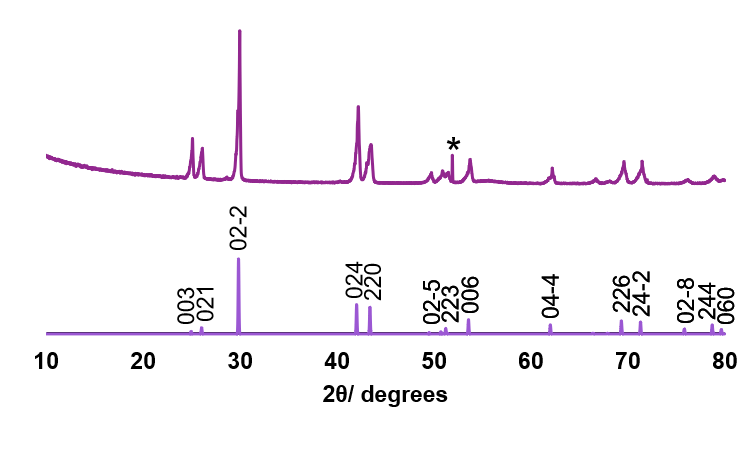Germanium telluride (GeTe) is a promising candidate for a number of technologically important applications including incorporation into thermoelectric, ferroelectric and spintronic materials, as well as in solid state data storage when combined with antimony (Sb).
Various techniques have been applied in the past to create different forms and morphologies of GeTe depositions. One of these techniques, chemical vapour deposition (CVD), is widely used for depositing thin films and coatings due to its relatively low cost and scalability. In previous work, CVD has been carried out with two source chemicals to produce thin films of GeTe.
The interdisciplinary group of chemists and electronic engineers from the University of Southampton developed and characterised a single source precursor containing both the germanium and tellurium required: Ge(TenBu)4. Use of a single reagent could offer more control over both the stoichiometry and the precise deposition location of the GeTe.
The Southampton team has a long standing collaboration with Dr Gavin Stenning and Dr Marek Jura from the ISIS Support Laboratories Group. As part of this work, the Materials Characterisation Lab at ISIS was used to determine that they had been able to successfully deposit thin films of GeTe with high purity and good functional properties. Their results have been published in Dalton Transactions.
“The team at Southampton have made great progress in successfully depositing GeTe in high purity" Dr Marek Jura explains. “This methodology of depositing GeTe has the potential of being used in the fabrication of functional devices to produce better performance. The instrumentation and expert technical support provided within the Materials Characterisation Lab has played a crucial role in determining the composition and properties of these films."
The work involved the use of Grazing Incidence X-Ray Diffraction (GIXRD), shown below, and Atomic Force Microscopy to establish the structural and compositional characteristics of the films. The Materials Characterisation Lab is a valuable facility which benefits a large user base across a broad area of materials research.


GIXRD pattern obtained for the GeTe film deposited on SiO2 from [Ge(TenBu)4] (top) and an indexed XRD pattern for bulk GeTe (bottom). The peak due to the Si underlying the SiO2 in the substrate is marked *.
Looking further ahead, the group intend to optimise their reagent and use it in combination with compounds such as MeSb(TenBu)2 to deposit Ge2Sb2Te5, or a layered deposition of GeTe/Sb2Te3; both of which have technologically important applications in solid state data storage (memory) systems.
Further Information
This research was published in Dalton Transactions.
Find our more information about our Materials Characterisation Lab here.
Find more information about the Southampton Research Team here.
